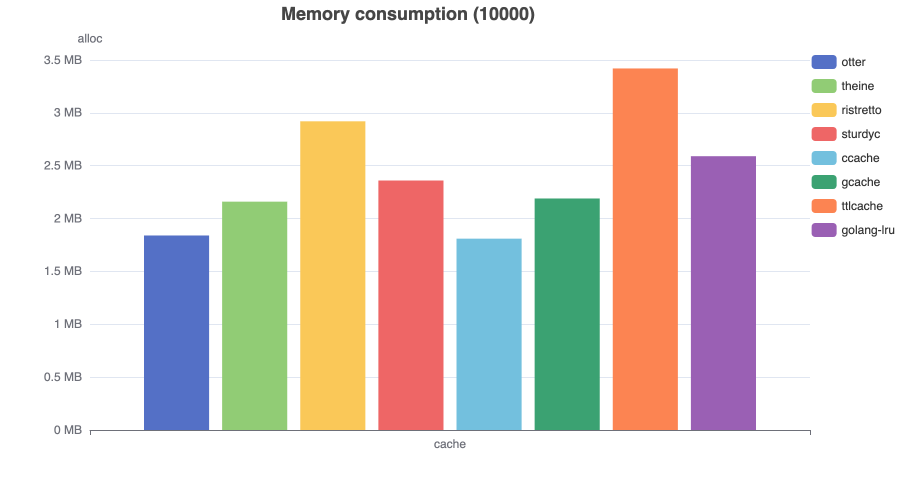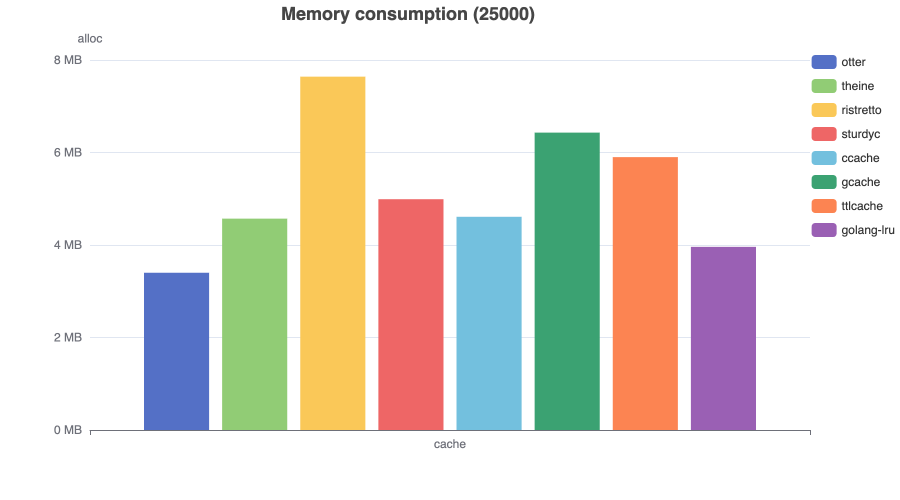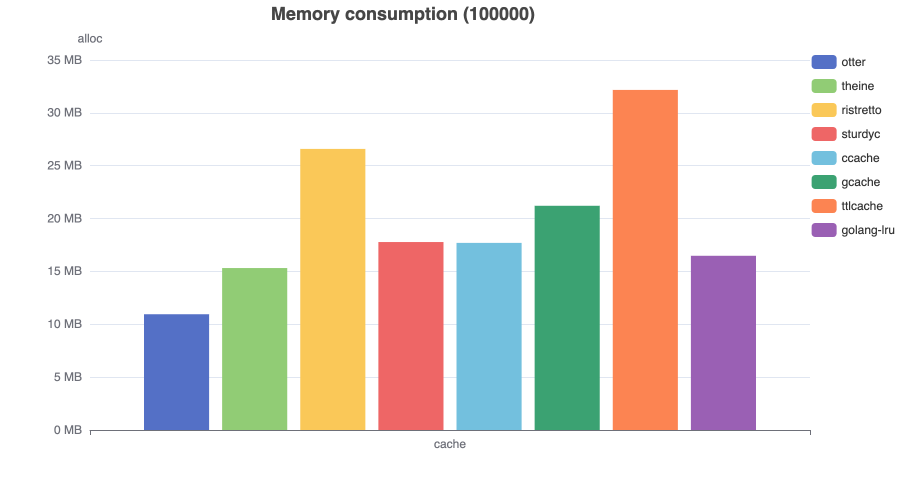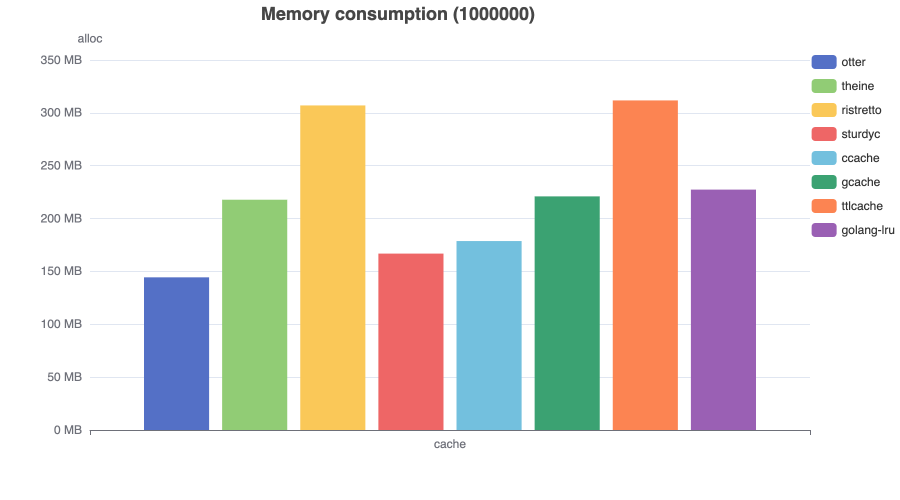Memory consumption¶
Description¶
These benchmarks utilize pre-generated 32-byte key-value pairs (fixed-size strings). All implementations were tested with expiration policies enabled to measure memory overhead - representing the most common cache usage pattern.
The source code can be found here.
Capacity (1000)¶
This benchmark measures memory overhead for a cache with a fixed capacity of 1,000 entries.
Capacity (10000)¶
This benchmark measures memory overhead for a cache with a fixed capacity of 10,000 entries.
Capacity (25000)¶
This benchmark measures memory overhead for a cache with a fixed capacity of 25,000 entries.
Capacity (100000)¶
This benchmark measures memory overhead for a cache with a fixed capacity of 100,000 entries.
Capacity (1000000)¶
This benchmark measures memory overhead for a cache with a fixed capacity of 1,000,000 entries.
Conclusion¶
Otter maintains low memory overhead across all capacity levels - a notable achievement considering its additional read/write buffer implementation.
Note that Ristretto typically consumes less memory than competing cache implementations. This optimization comes with a significant tradeoff - the library employs an unconventional approach where it stores only dual hash values instead of actual keys.




